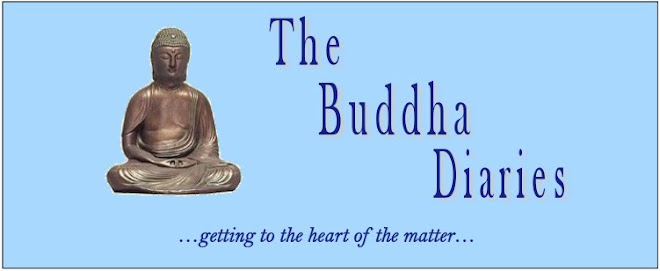We look askance today at what was done in the 19th century in the name of empire and world-wide dominion. The European powers engaged in the Great Game of colonial expansion felt free to wander the globe appropriating whole countries, peoples and natural resources to enhance their political and economic power. By the same token, they swallowed up whole cultural heritages, plundering, crating up, and shipping artifacts back to the great museums in Paris, St. Petersburg, Berlin, London, and other capitals. Shamefully, my own country of origin was a leader of this pack of thieves. And America was no slouch. Take a stroll through the glorious Metropolitan Museum in New York City: it's impossible not to feel a pang of guilt along with all the indubitable aesthetic joys.
It is this history that forms the background for Journeys on the Silk Road, by Joyce Morgan and Conrad Walters. This is the story of Marc Aurel Stein's marvelous, often dangerous journey in 1906, as he followed the Silk Road across Asia from Kashgar to Dunhuang, the site of The Caves of the Thousand Buddhas, plundering gaily along the way. His ultimate target was not the gold or precious art objects some sought, but rather a fabled stash of ancient scrolls, hidden away for centuries in one of those thousand caves, guarded at the time by a solitary abbot, Wang, who after much diplomatic persuasion, proved willing to sell a vast number of them for a handful of British pounds and shillings. He used the money, it seems, to further his own reckless and, to Stein, dreadfully tasteless "restoration" of the caves. The loot included the oldest dated book in history, a Chinese wood-block printed version of the Diamond Sutra, made in the year 868--a long, long time before Gutenberg and his Bible.
Stein was not alone in his quest. A part of the drama of this story is the race against competitors from France, Germany and Russia to be the first at the scene--much like the contemporaneous race between Scott and Amundson to reach the South Pole. There was national pride involved, along with the competitive spirit among males. It was the last great era of earth exploration--a spirit that now finds renewal in the exploration of space--and Stein, as he's portrayed in this book, was if nothing else an intrepid explored. He scarified virtually every other aspect of life to this grand pursuit, and he devoted himself to it through every injury and illness, every frustration and disappointment, every roadblock and dead end. The hazards of travel on camel, horseback, pony and donkey are barely imaginable to those of us who are used to jet planes and motorized vehicles, and of course the ubiquitous comfort of modern hotels and restaurants. Morgan and Walters's narrative takes us through the sands of the Asian deserts, the occasional oases along the way, and the bustling cities where merchants ply their trade. It's an invigorating, sometimes humbling step back in time.
I have to say that the adventure does slow, at times, to a bit of a plod along these "Journeys." The book is at its best when it arrives at its destination, describing those thousand caves and the story of their centuries-long creation by a succession of Buddhist monks. The statuary, the murals, the paintings on silk are all a testament to their dedication to the Buddha's teachings and their desire to understand them better, and to pass on their knowledge and tradition to others. Successive invasions by Western archeologists and explorers like Stein have left them depleted; the depredations by a variety of marauders, including Muslims incensed by images of a different faith as well as thieves and vandals have caused damage that can never be repaired. Much of the ancient art and documentary remains are scattered, now, throughout the world, transformed from devotional to academic and aesthetic purpose. The caves are now under the protection of the Chinese government, their fragile integrity threatened by the constant stream of hundreds of thousands of tourists.
The book ends with a series of chapters updating the reader on the history of the documents thus "liberated" from the caves the kept them hidden for so many centuries, including a fascinating World War II sojourn in a special cavern dug into the Welsh mountains near Aberystwyth. There is a good faith, co-operative international effort to bring all the scrolls back together "under one roof," as it were, on the Internet--a space where they are at once entirely protected from theft and vandalism and at the same time readily accessible to anyone with a computer. Meanwhile, of course, the Diamond Sutra exists also in the hearts and minds of those who love this gem of Buddhist wisdom, and who spread its teaching about the nature of reality and the truth of impermanence. A printed version made in ninth century China will remain a transient object, no matter the human efforts to preserve it. Assuming that our species itself survives its own insanity, the essence of its wisdom will outlast it.
Kudos to the authors, then, from bringing us this morality tale, reminding us at once of the nobility of the human spirit in its endeavor to seek truth wherever we can find it, no matter what the effort or sacrifice. And for reminding us, too, of how we can so easily go astray in our pursuit of what we assume to be the good--and end up causing more harm than we had intended.

No comments:
Post a Comment